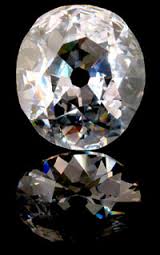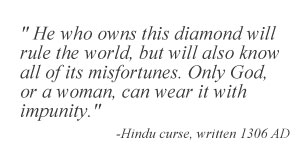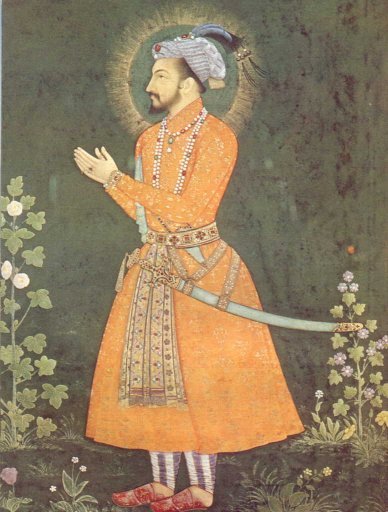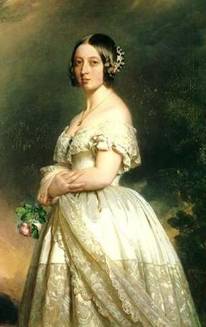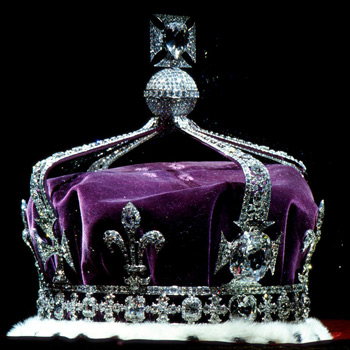In the spirit of the upcoming Halloween festivities, we thought a series on Haunted Diamonds would be fun. First in this series, the Curse of the Koh-i-Noor Diamond!
The history of the rulers who have owned the Koh-i-Noor diamond is filled with treachery, murder, torture and betrayal. The legend of the Koh-i-Noor stretches back thousands of years to its first mention in a Sanskrit writing nearly 5,000 years old. Its first authenticated mention was in 1306 when it was stolen from the Raja of Malwa, whose family had owned the astonishing 793 carat diamond for hundreds of years. Originally named Samantik Mani (Prince Among Diamonds), the Koh-i-Noor gained its infamous name from Persian general Nadir Shah in 1739. Supposedly he cried out, “Koh-i-Noor!” (‘Mountain of Light’) upon discovering the diamond hidden within the folds of the Mughal Emperor Mohammed Shah’s turban.
It is said that any man who has ever worn the Koh-i-Noor has fallen from power or suffered serious misfortune. The first recorded instance of the Curse of the Koh-i-Noor
involves Prince Humayun, who received the diamond and suffered with ill luck for the rest of his life. His heir, Sher Shah Suri, came into possession of the diamond and died shortly thereafter, the victim of cannon fire. Sher’s son, Jalal Khan inherited the Koh-i-Noor and was then murdered by his brother-in-law. Prince Humayun’s great grandson, Shah Jahan (builder of the great Taj Mahal) had the diamond mounted on the Peacock Throne, which was the Mughal throne of India. The Shah was betrayed and imprisoned by own his son. The legend tells that the Shah would only be able to see his beloved Taj Mahal by viewing its reflection in the diamond. His son, Aurangazeb then took the diamond to Lahore, where it stayed until 1739, when general Nadir Shah invaded India and claimed ownership of the diamond.
The historical origin of the Koh-i-Noor diamond is not certain. It was most likely originally mined in the Golconda mines of India, from which also issued the famous (and cursed) Hope Diamond. Eventually, the British Crown came into possession of the Koh-i-Noor after Ranjit Singh, the last Indian owner of the diamond, died. This was not a provision of Ranjit Singh’s will, and even at the time the secretive transfer of the diamond to the East India Company in
London caused controversy because it was seen more as an ill-gotten spoil of war rather than a true gift to the British Crown. The diamond was presented to Queen Victoria in July of 1850. She wrote: “The jewels are truly magnificent. They had also belonged to Ranjit Singh and had been found in the treasury of Lahore…. I am very happy that the British Crown will possess these jewels for I shall certainly make them Crown Jewels”.
In the Great Exhibition in 1851 the Koh-i-Noor was displayed for the public. Crowds lined up to see it, but unfortunately the overall reaction was one of disappointment. The diamond was moved to a different case to catch more sunlight, but it still underwhelmed its viewers due to its rough rose cut. In 1852, Prince Albert had the diamond recut into a brilliant oval shape in order to improve its light performance and color. The Koh-i-Noor diamond is now 105.60 cts and is currently
set in the Crown of Queen Elizabeth. The Royal Family, perhaps themselves wary of the curse, have decreed that only the females of the family could inherit the diamond, and the Koh-i-Noor should only go to the wife of any male British heir. Today it remains part of Britain’s Crown Jewels, and may be viewed at its resting place in the infamous Tower of London.
Check back next time for more stories about Haunted Diamonds!

